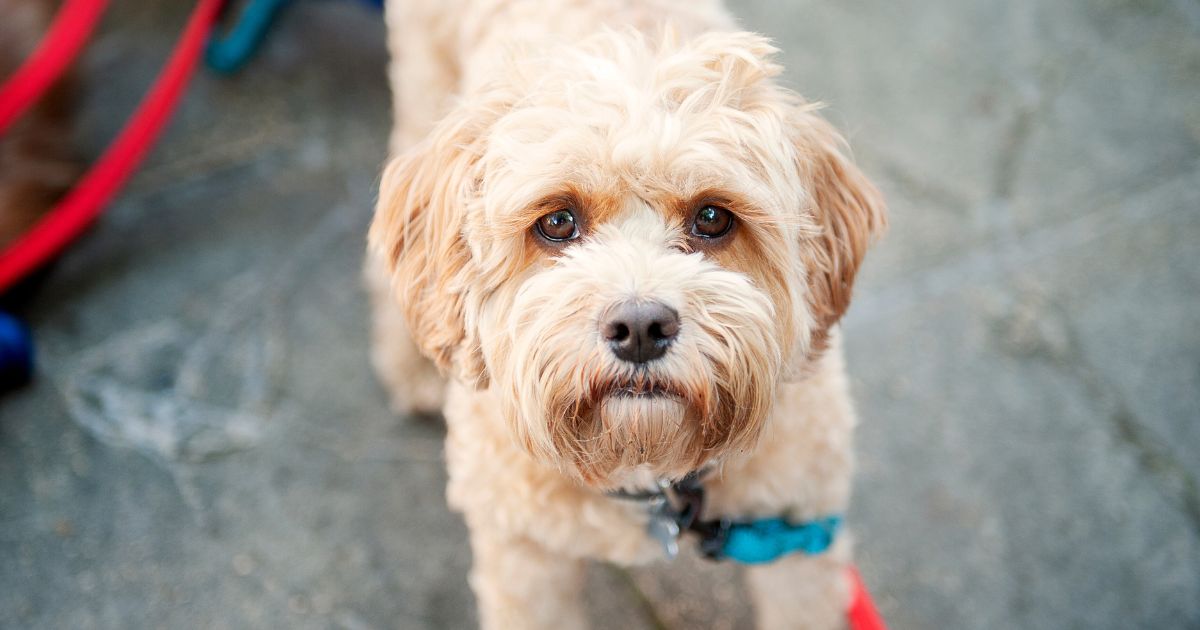If you’ve ever noticed reddish brown streaks or stains under your dog’s eyes, you might be worrying about tear stains. Well, don’t worry. In this blog post, we’ll share everything you need to know about dog tear stains – what they are, what causes them, and most importantly, how you can help your pup stay bright-eyed and stain-free!
What is tear staining in dogs?
Tear staining occurs when tears overflow and leave unsightly rusty-coloured streaks on the fur, mainly around the eyes. While tear stains themselves are harmless, they can be a cosmetic concern for pet owners.
And why are tear stains red? Well, that’s due to an iron-rich compound called porphyrin, excreted as a waste product of red blood cell metabolism via the tears, saliva, bile and urine. This is why these stains can look really red on white or very light-coloured dogs in particular.
What does tear staining look like?
Imagine your dog with what appears to be reddish-brown “tear tracks” beneath their eyes. This is the telltale sign of dog tear staining. It’s a good idea to address these stains not only for aesthetic reasons, but also because they can indicate an underlying issue that needs attention.

What causes dog tear stains?
Several factors can contribute to tear staining in dogs:
- Excessive tearing: dogs are all individuals and some may naturally produce more tears than others, leading to staining over time.
- Genetics and facial conformation: breeds with short faces or muzzles, like Shih Tzus, Pugs, and Bulldogs, may be prone to tear staining due to the shape of their faces. They may also be prone to deformed or even blocked tear ducts in the eyes, which in dogs with normal anatomy would drain tears away from the eye.
- Diet: poor nutrition or food allergies or sensitivities can cause excessive tearing, or more porphyrin to be excreted which contributes to staining, but diet is a far less important factor than many people think.
- Eye infections or irritation: infections, blocked tear ducts, or other eye-related issues and irritations will increase tear production and overflow, so can lead to tear staining.
- Teething: puppies may experience tear staining during teething due to increased tear production.
Read more about how to know if your dog has a food allergy.
Which dogs are most likely to get tear staining?
While tear staining can affect any breed, dogs with light-coloured fur, especially those with white or cream coats, tend to display tear stains more prominently. Breeds with facial skin folds, protruding eyes, saggy eyelids, flat faces or short muzzles (brachycephalic breeds) are also more susceptible due to their unnatural anatomy.
The breeds most at risk include:
- Pug
- French Bulldog
- English Bulldog
- Boxer
- Lhasa Apso
- Shih Tzu
- Boston terrier
- Pekingese
- Bull Mastiff
- Bichon Frise
- Maltese
- Poodle
- Cocker Spaniel
- Basset Hound
- Bloodhound
- Yorkshire Terrier
- West Highland White Terrier
- Cairn Terrier
- Samoyed
- Schnauzer
- Dachshund
- Labrador Retriever
- Golden Retriever
Is it bad or dangerous?
In most cases, tear staining itself is harmless. However, it’s crucial to address the underlying causes, as excessive tearing can be a sign of an eye or health issue. For example, if your dog has a blocked tear duct, also known as a nasolacrimal duct, then they may be more prone to infection. Regular veterinary check-ups can help rule out any potential concerns.
How to help prevent tear stains:
- Maintain good hygiene: Gently clean your dog’s face daily with a soft, damp cloth to remove tear residue and prevent staining.
- Regular grooming: Keep the fur around your dog’s eyes trimmed to minimise contact with tears and reduce staining.
- High quality diet: Ensure your dog is on a balanced, high-quality diet tailored for their individual needs to promote overall health, including eye health.
- Treat underlying issues: If tear staining persists, talk to your vet to address any underlying health concerns that may be contributing to the problem.
- Natural tear stain removers: Explore natural solutions such as gentle tear stain remover drops. But always check with your vet before trying new remedies.
No need to cry about it
Dog tear stains might seem like a cosmetic concern, but they can offer insights into your pet’s health. By understanding the causes and taking proactive steps to address them, you can keep your dog’s eyes clear, bright, and free from those unsightly streaks.
Head Vet Sean has heaps of advice and insights, find more here.


My 11 year old black Labrador Retriever always seems to get dirty eyes and I always clean them.
What can I do to reduce or stop her eyes getting like that